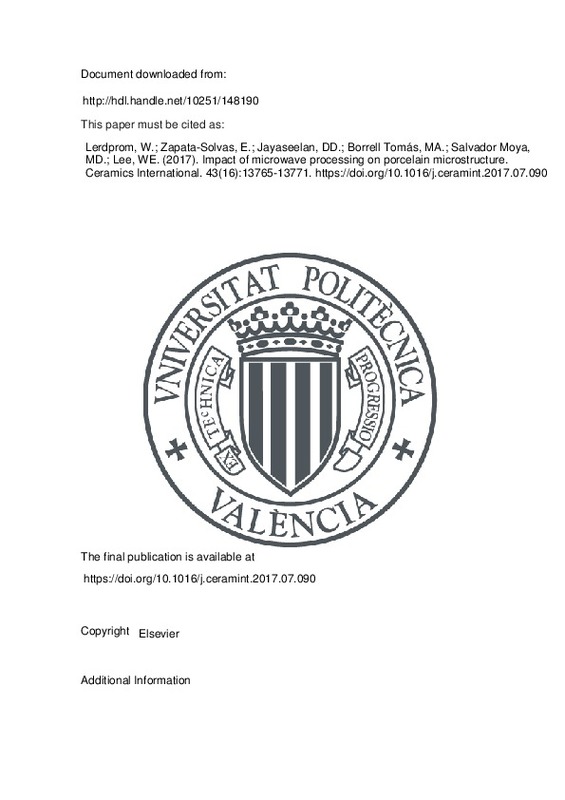JavaScript is disabled for your browser. Some features of this site may not work without it.
Buscar en RiuNet
Listar
Mi cuenta
Estadísticas
Ayuda RiuNet
Admin. UPV
Impact of microwave processing on porcelain microstructure
Mostrar el registro completo del ítem
Lerdprom, W.; Zapata-Solvas, E.; Jayaseelan, DD.; Borrell Tomás, MA.; Salvador Moya, MD.; Lee, WE. (2017). Impact of microwave processing on porcelain microstructure. Ceramics International. 43(16):13765-13771. https://doi.org/10.1016/j.ceramint.2017.07.090
Por favor, use este identificador para citar o enlazar este ítem: http://hdl.handle.net/10251/148190
Ficheros en el ítem
Metadatos del ítem
| Título: | Impact of microwave processing on porcelain microstructure | |
| Autor: | Lerdprom, Wirat Zapata-Solvas, Eugenio Jayaseelan, Doni D. Lee, William E. | |
| Entidad UPV: |
|
|
| Fecha difusión: |
|
|
| Resumen: |
[EN] Microstructural evolution on sintering of porcelain powder compacts using microwave radiation was compared with that in conventionally sintered samples. Using microwaves sintering temperature was reduced by similar ...[+]
|
|
| Palabras clave: |
|
|
| Derechos de uso: | Reserva de todos los derechos | |
| Fuente: |
|
|
| DOI: |
|
|
| Editorial: |
|
|
| Versión del editor: | https://doi.org/10.1016/j.ceramint.2017.07.090 | |
| Código del Proyecto: |
|
|
| Agradecimientos: |
|
|
| Tipo: |
|







![[Cerrado]](/themes/UPV/images/candado.png)


